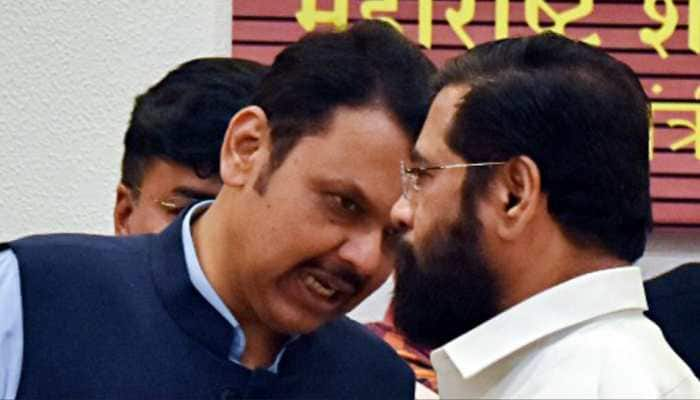Dussehra 2022: Ravana's 10 heads and what they symbolize
The significance of Ravan's 10 heads according to the 'Shastras' and 'Vedas' symbolize 10 different qualities of the 'evil' learned king of Lanka. Read more to find out.
- Dussehra or Vijayadashmi will be celebrated on 5th October
- Ravan Dahan also takes place later today
- The 10 heads of Ravan represent the qualities he gained through his life
Trending Photos
) Source: File photo
Source: File photo Dussehra 2022: King of Lanka, Ravana was a learned king who had a high intellect and was a great worshipper of Lord Shiva. The word "Dussehra" derives its meaning from the festival's mythology, where "Dus" stands for Ravana's ten heads, or evil, and "hara" is to defeat or remove. The six shastras and four Vedas that Ravana had mastered are thought to be represented by his ten heads, as he was a knowledgeable king. The 10 heads could also signify Ravana's intellectual capabilities, which were thought to be 10 times more than that of the common person.
Even though Ravana was a skilled warrior, a fine king, an astrologer, and an expert in Ayurveda, he fell victim to a host of vices. Despite being a master of many different disciplines of knowledge, Ravana did not put any of his knowledge to use. Despite having unlimited resources, he was unable to enjoy anything due to his excessive desires.
According to Hindu scriptures, the ten heads were received as a boon from Lord Shiva as a result of his 'Sadhna' representing the 6 Shastras and 4 Vedas but are now representatives of his 10 evil sins for which Ravan Dahan is performed every year.
Let's take a look at what the 10 heads of Ravana represent
KAMA (LUST)
When Ravan abducted Mata Sita, it was his lust that made him want to marry her knowing the fact that Mata Sita was the wife of Lord Rama.
KRODHA (ANGER)
It was Ravana's anger which brought his destruction even sooner because his anger made him impatient and commit sinful acts.
MOHA (ATTACHMENT)
Ravana was strongly attached to his possessions and after he started considering Mata Sita as his own, he went on to cross all boundaries to keep her in his control.
LOBHA (GREED)
Ravan was overpowered with greed and the desire to gain more which was one of the reasons he abducted Mata Sita.
MADA (PRIDE)
It is nice to be proud but it's different when your pride consumes you and turns overbearing to others. Ravana too was too proud of his intellect and military strength.
MAATSARYA (ENVY)
With Moha came Maatsarya, the desire to possess all the things there are even those that belong to others by all means necessary.
GHRINA (HATE)
Ravana's hatred for other people was beyond bounds, he had some narcissistic qualities which led to his eventual destruction.
BHAYA (FEAR)
Ravan's fear of losing his possessions and most importantly losing Mata Sita made him do sinful deeds which caused his death.
BUDDHI (INTELLECT)
Ravan being a worldly scholar was one with great intellect but he put this power to evil which brought him his demise because he became insensitive and did not care for anyone but himself.
AHAMKARA (EGO)
Ravana's inflated ego encouraged him to do all acts of sin from abducting Mata Sita to attacking Lord Rama, just to protect himself behind which he did not see any reason.
Also Read: Happy Dussehra 2022: Vijayadashami WhatsApp messages, wishes, greetings and quotes
Thus, the ten heads of Ravana also represent the idea that having more than you need is meaningless.
Stay informed on all the latest news, real-time breaking news updates, and follow all the important headlines in india news and world News on Zee News.
Live Tv







)
)
)
)
)
)
)
)
)
)
